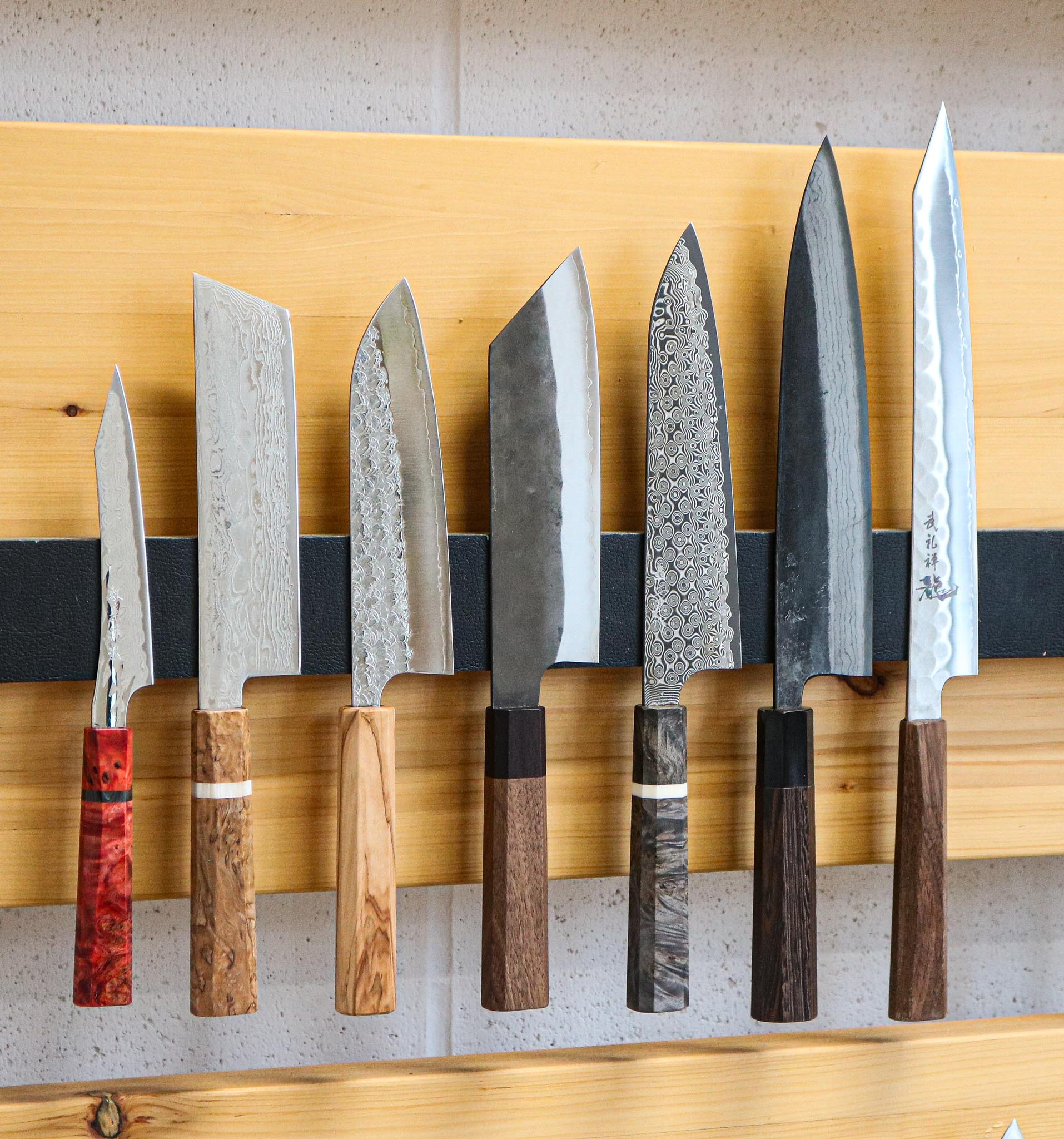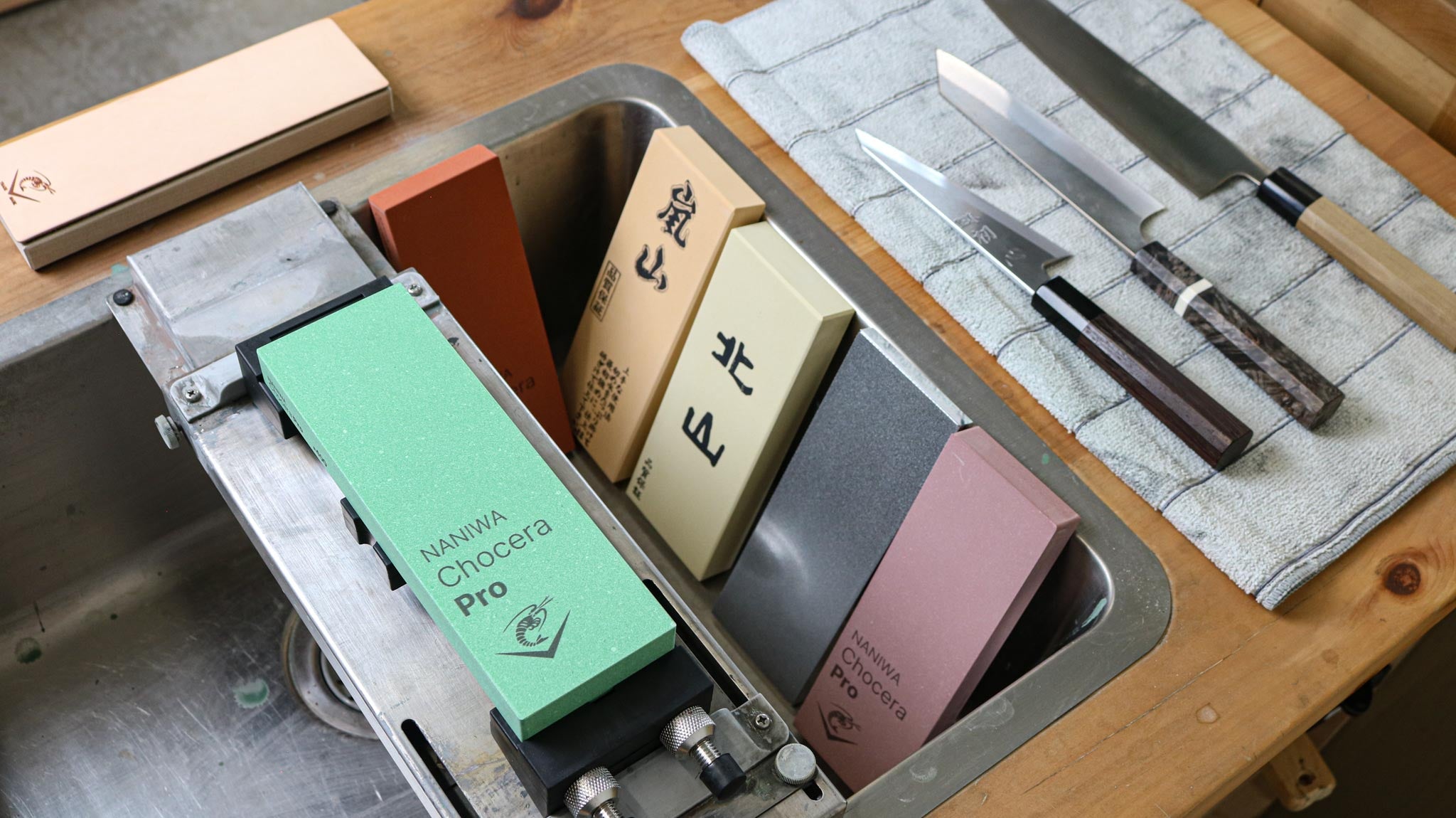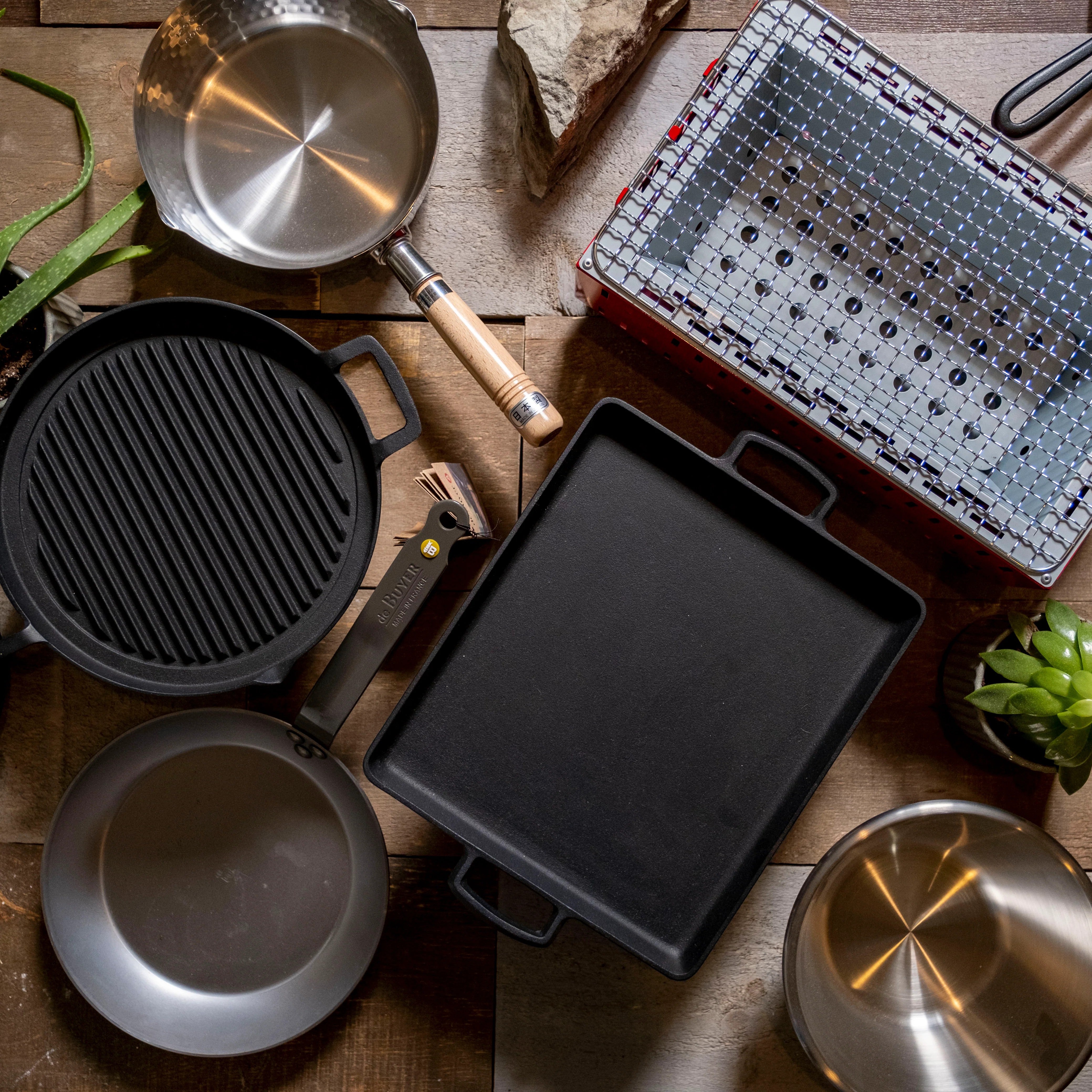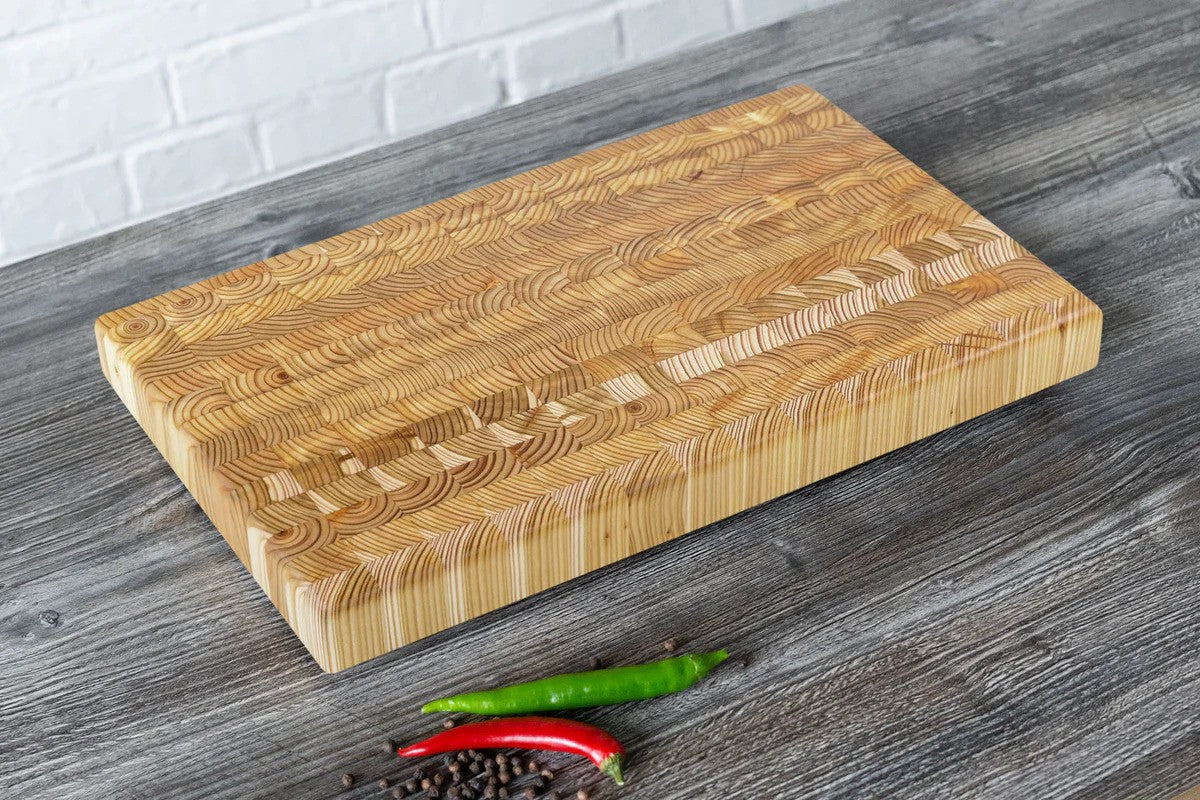Menu
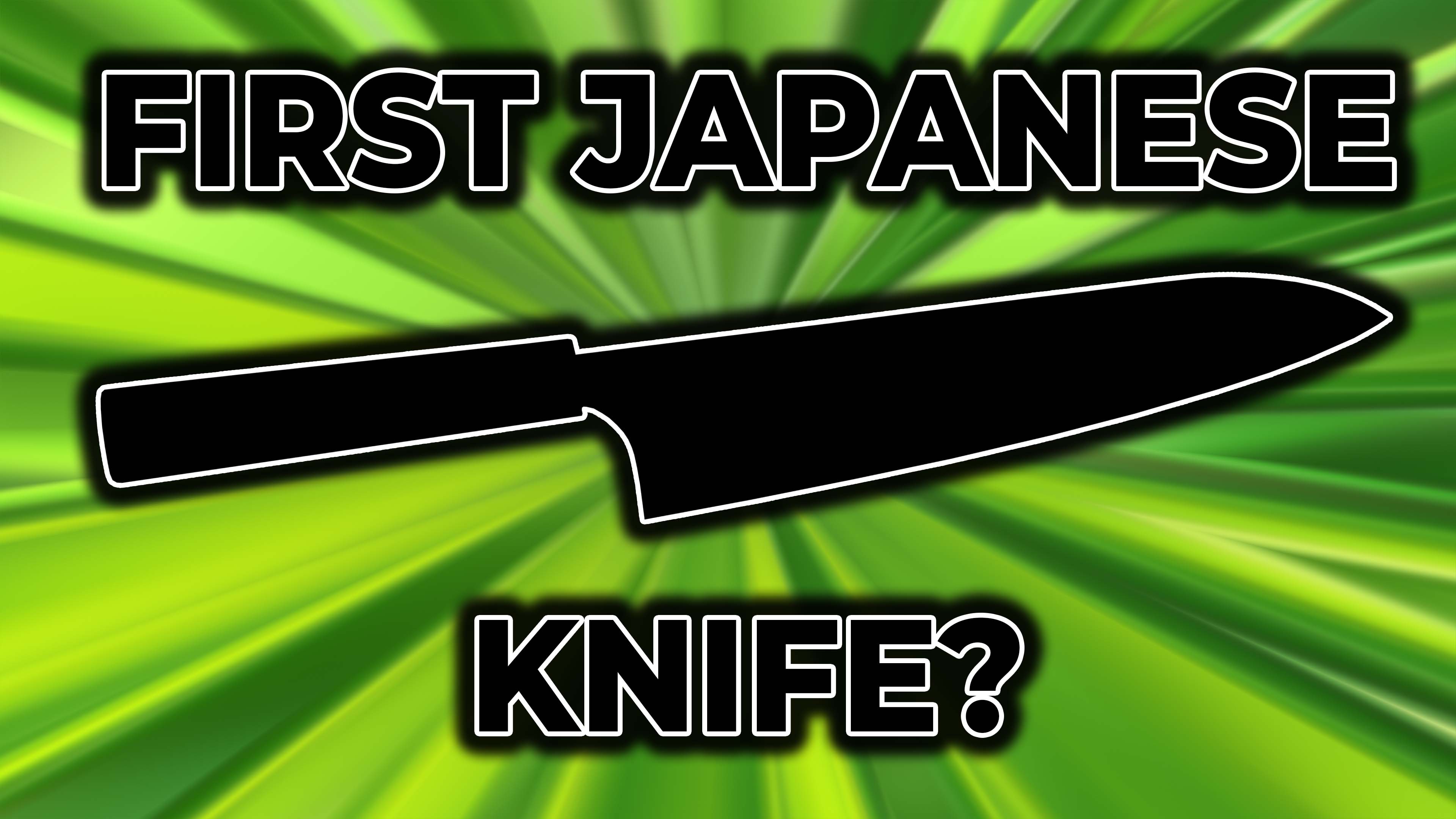
Buying Your First Japanese Knife
Hey folks, Jake from Sharp and today we're going to talk about the things I wish I had known when I first got into Japanese knives. Back then when I was still floating around restaurants, learning what I could before moving on to the next place to do the same, I got to meet a lot of great cooks and chefs along the way. As a knife nerd one of my favorite parts of this was seeing inside their knife rolls. I would fawn over them and occasionally get to try them out for myself before begrudgingly giving them back and grabbing a Nella with a missing tip that could easily be confused for a crow bar. I did a lot of research and I finally pulled the trigger.
My first purchase was a matching set of Blue #2 iron clad, wa handled santoku and nakiri. While I still have these knives and still love them, it wasn't a practical first purchase, and here's why.
There was tons of contradicting information between two points of view. One, that you should buy the knives that you think are cool because they'll get you into the kitchen and using them more(Which wasn't really a worry for me because like it or not, that's how I paid my bills). And two, that you should get the most versatile knives you can, and then branch out from there. At least, I thought this was two separate points of view back then. I didn't see the whole picture that was painted before me. Yes, you probably should get a 210mm gyuto as your first knife, but get the 210m gyuto that YOU want.
If I had to rank the knives that I think are the most versatile and useful I would say the most important knife would be a gyuto or the Japanese equivalent of a chefs knife. The second knife I would recommend would be a petty or paring knife. And the third would be a serrated knife. Between the gyuto and the petty what makes them so very versatile is that they have very different blade lengths. Allowing you to have a big knife for the bigger tasks like breaking down a salmon, cutting a huge watermelon, or or cutting up vegetables. Having a smaller knife like a petty lets you comfortably and quickly clean smaller produce like capping strawberries, mincing garlic, cutting cheese (its great to have a thinner,shallower knife for product that loves to stick to the blade for reduced drag) and can also be great tools to break down smaller animals like parting a chicken out, or cleaning smaller fish. A serrated knife is great for bread and also for softer ingredients with tough skins like tomatoes when your other knives aren't at their sharpest. Since serrated knives need to be sent to the manufacturer to be resharpened I personally like to buy cheaper serrated knives (the Vitorinox is my favorite cheapy) and just replace it for 30 dollars every 4 or 5 years.
Regardless of whether or not you decide to start out with a gyuto, petty, and serrated knife or anything else you'll have a few decisions to make.
The first of which is if you want carbon steel, or stainless steel. Stainless steel knives will require less work to maintain as you won't need to worry about keeping them as dry or worry about acidic foods eating away at your protective patina. That said stainless steels are harder to sharpen and in my opinion never get quite as good an edge as a carbon steel. While carbon steels require more care to make sure they don't rust, they sharpen quicker and take a better edge.
Also note there there are hybrid knives where the cladding is made of a stainless steel and only the core steel is carbon. The best of both worlds as far as edge retention, corrosion resistance, and ease of sharpening. These are my personal favorite.
The second choice you'll have to make and this one really does come down to personal preference is the type of handle. You can get Japanese blades with either a Japanese Wa handle, or with a western style handle that you may be more familiar with. The type of handle will effect the balance of the blade as western style handles are usually heavier than wa handles. But it depends on what feels comfortable to YOU. If there is a knife store near you I implore you to go in and handle as many knives as you can to see what fits your hand the best.
That's it guys, you don't need to overthink it as much as I did. It's your first Japanese knife and no matter what you're going to love it. Think about your personal needs and cooking habits and buy something that you think suits you.
Have a small kitchen and tiny cutting board? Consider a slightly shorter bunka or santoku in place of a gyuto to save space. Work with a lot of wet messy jobs like cleaning fish and poultry? Maybe get yourself a stainless knife. Have a lot of space and often cooking for a lot of people? Maybe a slightly larger 240mm gyuto is up your alley. You can always add the more task specific knives in later down the road if the basics aren't cutting it for you. But I doubt that you're going to use an usuba or yanigiba more than once a month unless you're a sushi chef.
- Choosing a selection results in a full page refresh.
